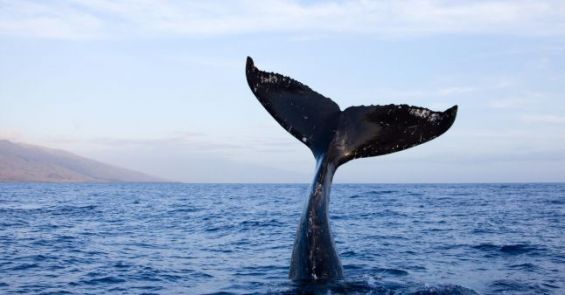According to a new study Published on Wednesday in the Proceedings of the Royal Society of London B research journal, whaling may be much older than we thought.
The survey suggests that the phenomenon wouldn’t have started with Basque whalers, around 1000 AD, as historians and scientists claim, but with ancient roman hunters who may have sped the extinction of certain species, including whales.
An international team of researchers, from the CNRS research institute and the University of Montpellier, discovered bones belonging to two species around the Strait of Gibraltar south of Spain, where they were never thought to have existed at all. In order to reach their conclusion, the researchers said that they have used «new molecular analysis techniques to study whale bones from archaeological Roman sites in the Strait of Gibraltar».
Redoing the whales cartography
The introduction of this study argues that right whales have disappeared from the eastern North Atlantic «because of commercial whaling», while gray whales have «disappeared from the entire North Atlantic zone under unknown circumstances». To uncover the mystery, researchers used techniques to identify «a rare set of 10 whalebones, probably from Roman and pre-Roman archaeological sites in the Strait of Gibraltar, in addition to a bone on the Asturian coast».
The University of Montpellier indicates in its website that the identification of bones has been possible, particularly with the help of «old DNA molecular techniques and collagen fingerprinting». «In a counter-intuitive way, whales are often neglected in archaeological studies due to their bones being too fragmented to be identifiable by their shape», says Camilla Speller, co-author of the study, archaeologist and geneticist at York University, cited by the same source. «These recent molecular methods open up new windows on past ecosystems», she adds.
Thus, the team was able to identify «three right whales and three gray whales». They found out that the ranges of these two species have historically covered the region of Gibraltar, «probably including the Mediterranean Sea as a calving site». This study explains that the disappearance of these two species «would have been accompanied by broader impacts on the ecosystem, including the disappearance of their predators (killer whales) and the reduction of marine primary productivity».
Researchers have also shown that 2,000 years ago, «gray whales and right whales were present in the Mediterranean, probably to breed there». This study «considerably widens the known historic range of these two populations of whales and raises the possibility that a forgotten Roman whaling industry contributed to their disappearance», explains Ana Rodrigues, CNRS researcher at the Center functional and evolutionary ecology of Montpellier to the French new agency (AFP).
According to the specialist, the discovery of these bones «in archaeological sites of the Roman empire shores opens the possibility of a whaling industry», which may have «contributed» to the extinction of these whales. Cited by the same source, Dario Bernal-Casasola, professor of archeology at the University of Cadiz and co-author of this study, indicates that the Romans were «extremely efficient» in the exploitation of marine resources», including big fish like tunas, or whales.
Reinterpreting Roman representations
Ana Rodrigues underlines to AFP that it is known that the Roman Empire did not have the «necessary technology» to capture the high seas species, but these two species of whales were «coastal and very visible in their breeding areas» she indicates. This is how the Romans were able to hunt them «using small rowing boats and hand harpoons, as did the Basque hunters later», adds the researcher. Anne Charpentier stresses that the results of the study will help to understand «the description that has been made in the first century, by the famous Roman naturalist Pliny the Elder, of Orcas attacking whales and their calves in the bay of Cadiz».
Parts of Roman history deserve reinterpretation. For this reason, the researchers who worked on this discovery call for historians and archaeologists to «re-examine this discovery, taking into account the fact that coastal whales were part of the Mediterranean marine ecosystem, and could be the basis of a Roman whaling industry. Ana Rodrigues concludes that «it makes us wonder what else we could have forgotten». «It seems incredible that we have lost, and then forgotten, two great species of whale in a region as well studied as the Mediterranean».
Right whales in the North Atlantic are listed as «endangered», according to the International Union for the Conservation of Nature (IUCN). It warns that there are less than 500 right whales today, off the east coast of North America.




 chargement...
chargement...












